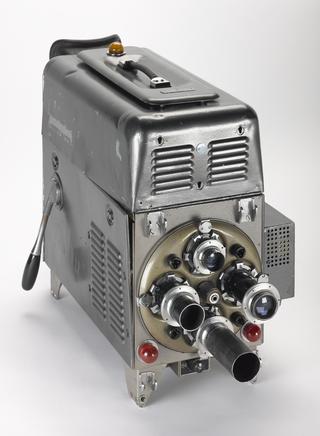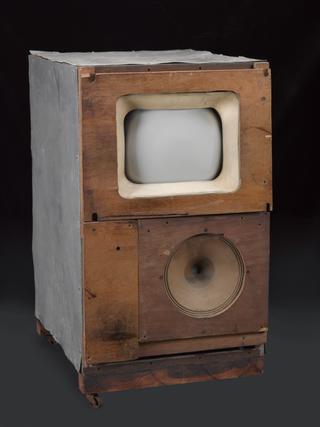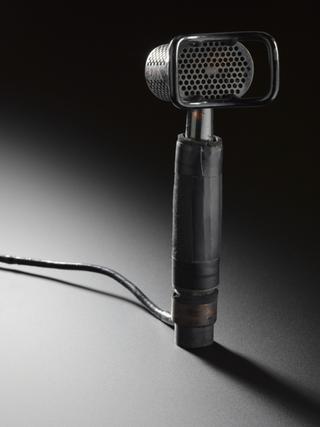
Cut-away Emitron television camera










Sectioned television camera head (incorporating an Emitron camera tube), first used at Alexandra Palace in 1936.
This demonstration model is cut-away to expose the camera mechanics and was given to the Science Museum in 1955 by EMI.
Emitron cameras were developed in the UK from 1933. After two years of rapid development, EMI committed to a 405-line resolution television standard. At this time, EMI's competitor RCA was still producing images with only 343-lines of horizontal picture resolution.
EMI with its 405-line Emitron cameras won the competition to provide the BBC’s first regular high-definition television service at Alexandra Palace, which broadcast from 1936 to 1939, and was re-activated in June 1946 after the Second World War. Shortages of money and resources in the post-war period meant that the Emitron cameras originally supplied to the BBC in 1936 remained in regular use well into the 1950s.
Details
- Category:
- Television
- Object Number:
- 1955-284/1
- Materials:
- metal (unknown), glass, electronic components, plastic (unidentified) and rubber (unidentified)
- Measurements:
-
overall: 400 mm x 640 mm x 420 mm, 17.22 kg
- type:
- camera head and demonstration model
- credit:
- Research Labs, EMI




